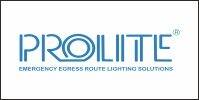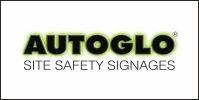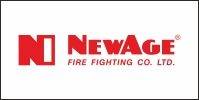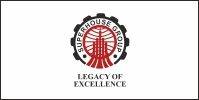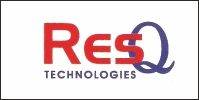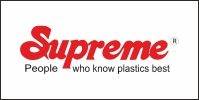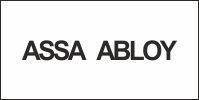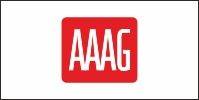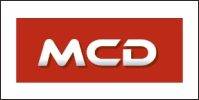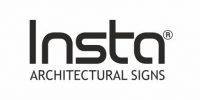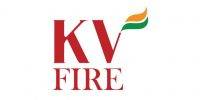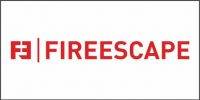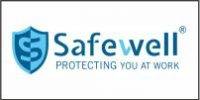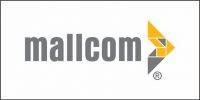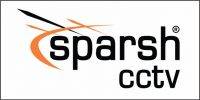 Occupational Health and Safety has been a topic of increasing importance over the last few decades and is growing across the globe. Due to its market demand, work places are becoming more complex resulting in increase of multiple hazards and associated risks. Injuries and illnesses are also increasing affecting the performance of employees. Direct and indirect cost of these incidents is very high. As per International Labour Organization (ILO), total cost of accident is almost 4 % of global Gross Domestic Product (GDP). It is important to note that every activity happening across industries or otherwise carry hazard and if proper precautions are not taken, there is always a possibility of an untoward incident. So, effective OHS management is very important in order to prevent injuries. When we talk about effective OHS management system, there are five pillars to be considered. First is a strong policy and guideline which is a reflection of management commitment towards OHS. Second is safety risk management. This includes identification of risk in every activity carried out in an organization and its control measures. Third is safety assurance. This mainly deals with ensuring implementation at the ground level. Fourth is a safety promotional activity. This is about making people aware about their roles and responsibilities in implementing OHS. Fifth is continual improvement and new initiatives which are always required to keep the system active.
Occupational Health and Safety has been a topic of increasing importance over the last few decades and is growing across the globe. Due to its market demand, work places are becoming more complex resulting in increase of multiple hazards and associated risks. Injuries and illnesses are also increasing affecting the performance of employees. Direct and indirect cost of these incidents is very high. As per International Labour Organization (ILO), total cost of accident is almost 4 % of global Gross Domestic Product (GDP). It is important to note that every activity happening across industries or otherwise carry hazard and if proper precautions are not taken, there is always a possibility of an untoward incident. So, effective OHS management is very important in order to prevent injuries. When we talk about effective OHS management system, there are five pillars to be considered. First is a strong policy and guideline which is a reflection of management commitment towards OHS. Second is safety risk management. This includes identification of risk in every activity carried out in an organization and its control measures. Third is safety assurance. This mainly deals with ensuring implementation at the ground level. Fourth is a safety promotional activity. This is about making people aware about their roles and responsibilities in implementing OHS. Fifth is continual improvement and new initiatives which are always required to keep the system active.
Hospitality industry is one of the growing industries across the globe. Its impact on global economy is about 9.5% of GDP. Same is the case with Indian economy. But this also attracts workplace health and safety hazards. With high number of casual staff members employed and ensuring each staff member is adequately trained and follows the correct OHS practices is a major challenge. Secondly, hospitality industry is mainly governed by costumers on daily basis. Their OHS is of paramount importance and if somebody is exposed to any hazard and if proper precautions are not taken, it may affect the brand value of entire organization. Although, there are multiple hazards present in small scale as compared to other hazardous industries, if happened, its impact may be huge.
Hazards in hospitality industry and its control:
The hospitality industry has its own unique set of OHS challenges. From hazard point of view, overall infrastructure and operations of hospitality industry may be divided into various categories like kitchen, bars, accommodation area, leisure area, machineries, assembly area, parking and other miscellaneous area. Different hazards are present in these areas and accordingly precautions need to be taken on the basis of hierarchy of hazard control i.e. elimination, substitution, engineering controls, administrative controls and personal protective equipment whatever best is possible for the business.
Following are few hazards identified in hospitality industry with few simple precautions that can be helpful in preventing injuries and ill health.
- Improper manual handling
One-third of injuries are a result of manual material handling like lifting, pushing, carrying, etc. When workers are engaged in repetitive tasks, they are at risk which can lead to long-term illnesses or even they may be unable to work.
To avoid this, the major focus should be on substitution of the process. Possibilities of pushing the material instead of lifting it should also be considered. Also, mechanical handling like trolley may be used. Ergonomically correct method of lifting should be taught to the staff. A large load should be break up into small load which will be easier to handle.
- Slips, trips and fall hazard
About one in five of these incidents result in an absence of more than one month which clearly signifies the seriousness of the hazard.
Slips are mainly due to presence of water or oil on the floor. This may be result of routine work or human error or weather condition. Trips occur due to unwanted or unorganized material like electric cables, curled-up carpets, uneven floor surfaces, steps or discarded items.
In case of planned activity, where slippery material is one of the hazards, safe operating procedure should be available and followed. In case of human error, emergency action plan should be in place to avoid human entry to such area, availability of spill kit, display warning signs. In areas where pedestrians are moving from wet to dry surface, keeping mat is a good option. In case of level difference or slope, highlighting level changes, providing slip resistant surface, proper illumination is some of the key requirements. Inside the premises, cables should be properly laid & mat edges should be properly fixed. Use of swimming pool is also a hazard and we need to ensure presence of attendants at all times. Suitable safety signage should be displayed near the area.
- Sharp edges
This is mainly related to knives which are a major hazard especially in food services activities. Many incidents occur because items are slipped when it is being cut or knife don’t move in the expected direction. This can be avoided by taking few simple precautions such as avoiding the use of knives or not using big kitchen knives, using pre-cut food, using scissors or retractable blade instead of knife for opening bags/boxes. We also need to follow correct SOPs while using sharp objects. One thing should be kept in mind during cutting that sharp objects should be away from our body & cutting should be done proper cutting board only.
- Falling Objects
Objects fall from a height are also a risk especially in storage areas. The obvious solution would be to avoid storing items at height, especially liquid containers or heavy material. Other precautions may be regular inspection of storage area for ensuring shelves & loads are stable, properly supported & not overloaded. Use of required Person Protective Equipment also plays an important role.
- Falling from height
This is related to human fall due to level difference. There is no particular definition for height. Any level difference is considered as height. If possible, doing the work from ground level will be the best option. Ladder / platform should be stable and people involved are properly instructed and trained. During non routine maintenance work, permit to work system should be followed in which the work can be monitored in a better & systematic way.
- Temperature:
Some equipment like oven, gas stove, hot oil /water etc. is always being used which involves steam or high temperature. Heat or steam can be rapidly released if not handled safely. To avoid carrying hot containers and let the containers cool first may be a safe option. The container should be stored only on flat level surface; use of gloves with proper grip, leaning across hot stoves should be avoided. The lids of hot containers should be opened away from the body. Similarly, Safe Operating Procedure should be followed for cold storages.
- Flammable gas
LPG (Liquefied Petroleum Gas) or PNG (Piped National gas) is used as a fuel mainly in kitchen. The main risk is its leakage followed by ignition. Simple precautions would be awareness about its risk & emergency isolation procedure to the staff. Local isolation should in safe area with clear marking of ON /OFF position and easily accessible. Gas appliances and its accessories should be checked by a competent person on a periodic basis. Area should well ventilated. There should not be any combustible materials and ignition sources in nearby area. Warning signs should be displayed. Fire fighting facility should be available. From operation point of view, isolation valves should be put off at the end of each working day.
- Fire
One of the greatest risks that may seriously threaten to the entire property and available guests is fire. It is one of the major risks that can spoil entire organization. There are various causes to start the fire such as faulty electrical wirings, damaged electrical equipment, flammable oil, naked flames, poor maintenance of gas appliances, poor housekeeping, presence of combustible material, smoking, hot surfaces, etc. Available Bar is also one of the fuels as it includes alcohol which is flammable, so proper precaution should be taken.
Fire hazard can be avoided by using minimum combustible material, maintaining proper housekeeping, regular inspection of electrical equipment and avoiding its contact with combustible material. But we should also be prepared to control the fire & minimize its damage. Apart from availability of fire extinguishers, fixed fire detection & protection system should be available in healthy condition as per applicable norms. Emergency exits should be properly marked and free from obstructions.
We also need to understand human life is more important than property damage. So communication to the available guest about basic fire prevention tips is also equally important and accordingly we may have a brief information leaflet for guest and regular training to the staff.
- Electrical hazard
This includes electrical shock & Fire. This can be prevented by deploying qualified & experience person for electrical work, avoid using damaged electrical equipment & fittings, prevent overloading, ensure safe environmental conditions, regular inspections and use of correct rating of ELCB. For non routine activities, permit to work system should be in place.
- Machinery / Equipment
Various machineries are used in hospitality industry which ranges from complex machineries to hand tools. Many incidents are caused due to incorrect use of machines, its poor maintenance, non-use of guards and not following SOP. These incidents can be avoided by using standard equipment and following SOPs. Ensure all machines are isolated from power when not in use. Equipment should be regularly maintained and inspected. Ensure proper controls are in place and machines are properly guarded. Lifting equipment should be examined & inspected from the competent person and most importantly the operator should be aware about the hazards and its control.
- Display Screen Equipment ( DSE)
This is applicable to the staff that is on display screens for long time. Prolonged improper use of DSE could lead to problems such as stress, eye strain and work related upper limb disorders. This is mainly associated with long working time & improper workstations. Work station should be evaluated ergonomically and users must have periodic breaks to have changes in their routine. They should be away from VDUs for some time by following rule of 20:20:20.
- Workplace vehicles
Frequent vehicle movement is also a high-risk activity. This can be avoided by simple tips like separate vehicles and pedestrians routes clearly identified & indicated car parking spaces which should be away from the main entrance. Speed limit should be clearly indicated and monitored.
- Use of chemical
Various chemicals are being used during housekeeping, bleaching and gardening. Some of these chemicals are hazardous and can cause burns, respiratory problems, dermatitis and even cancer.
Proper care should be taken while using these chemicals. Material Safety Data Sheet should be available for understanding the risk and taking required precautions. These chemicals should be stored securely in ventilated area and properly labeled.
- Emergency preparedness
Although all of us are committed to take all possible precautions, chances of incident or any other emergency situation cannot be ruled out completely and we should be always prepared for that in terms of emergency plans, procedures and other preparedness to minimize the intensity of that particular incident. We should be prepared for medical assistance, first Aid treatment with a trained first aider. All available fire fighting system should be well maintained & staff should be trained. Emergency Response Team should be in place to deal with any emergency situation. Further, we should have tie up with nearby hospitals and other emergency services. Regular Mock drills are also important requirement for ensuring our preparedness.
Health and safety is the key factor for all the industries in order to promote the wellness of both employees and employers. It is a duty and moral responsibility of the company to look after the employee’s protection.
Each and every person who leaves his home for his work in the morning should come back to his home in evening in good health. This is the only reason that why it is important to create a safe working environment.
Just to conclude, the hospitality industry is one of a fastest growing industry with multiple types of hazards requiring special attention to prevent existing risks. Identification of hazards is the key to effective OHS management system. We need to apply and follow hierarchy of hazard control on all these identified hazards in a best possible way in the interest of the organization. Here, we need to remember that good Health & Safety is also a good business and we all are committed to health & safety of all our stakeholders. Stay Safe!











